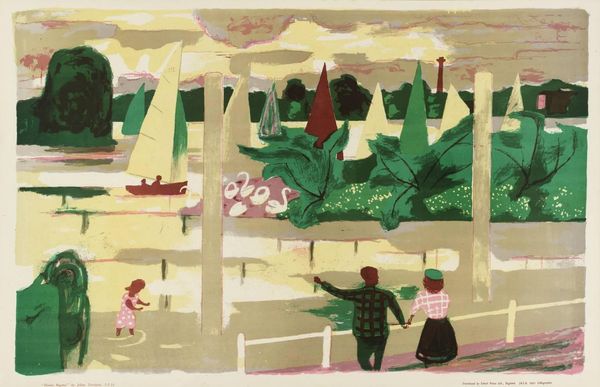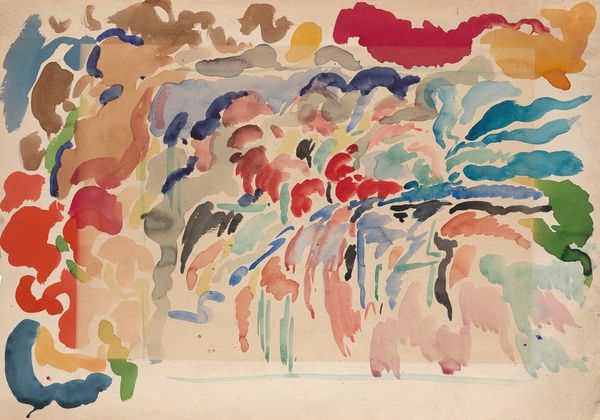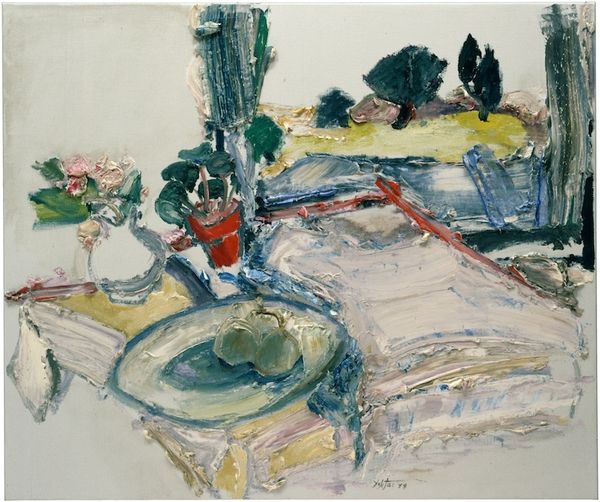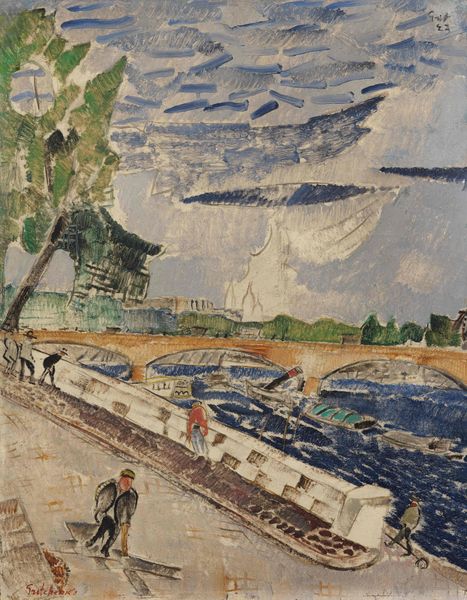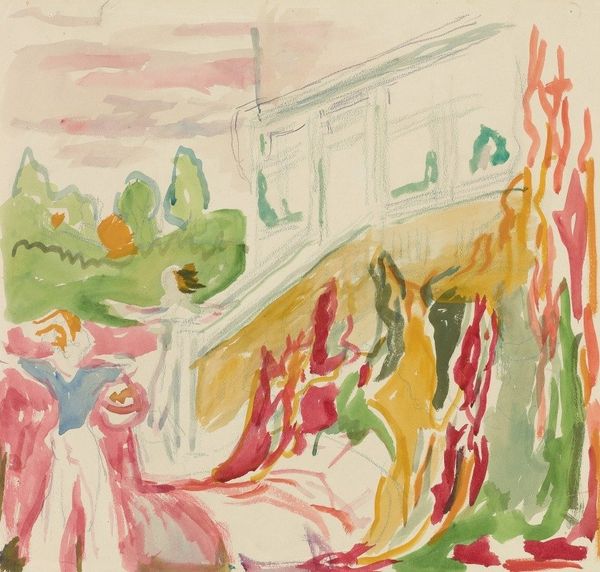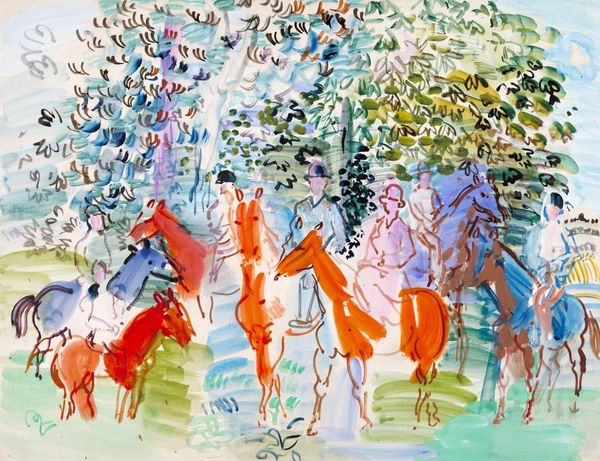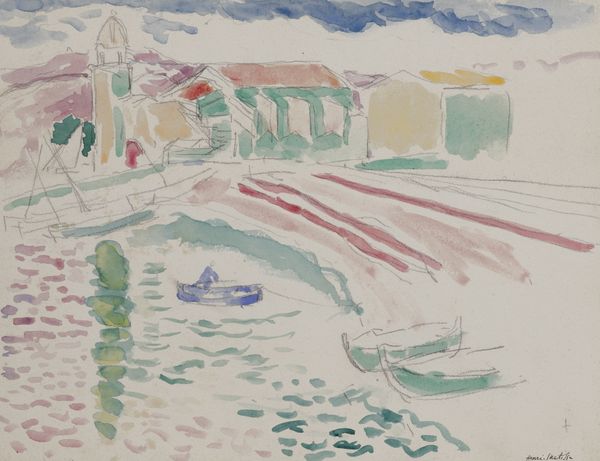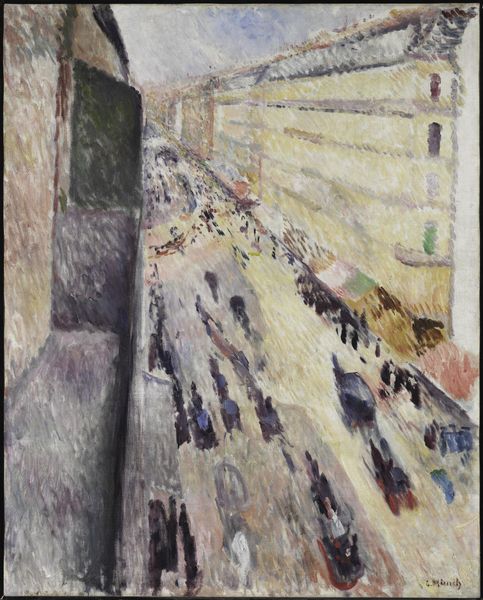
Copyright: Public domain US
Editor: This is Henri Matisse's "Festival of Flowers," painted in 1922 using watercolor. It depicts a scene overlooking a parade. It feels... joyful but also distant. What do you see in this piece, especially concerning how Matisse uses imagery? Curator: What immediately strikes me is the duality present: the intimate interior space juxtaposed with the bustling exterior festival. Look at the figures inside; they are observers, separated from the collective celebration by the architecture. Doesn't this conjure a sense of longing, a wish to participate yet remaining on the periphery? Editor: I see what you mean! Like, are they missing out on the fun? I guess it depends on whether their choice to observe is intentional or imposed. Curator: Precisely! Consider the flowers within the interior space versus the "flowers" of the festival – the flags, the colors. One is natural, the other constructed. The imagery asks: What is genuine festivity? Where do we find true joy, within or without? What kind of flowers feed our souls? Editor: It’s almost as if Matisse is using these symbols to ask whether true experience comes from participating in large-scale events or from quiet observation. I hadn't considered that before. Curator: Indeed. Even the blurred, almost dreamlike quality of the watercolor lends itself to this questioning, blurring the lines between reality and perception, memory and present experience. Consider too the implied viewers like us as viewers. What are we truly a part of? Editor: That’s a fascinating perspective. I came in just seeing a pretty picture, but I’m leaving with so much more to think about in how Matisse used familiar imagery to evoke deeper reflection. Curator: Exactly, art offers that mirror and window simultaneously. It enriches how we understand continuity, memory, and ultimately ourselves.
Comments
No comments
Be the first to comment and join the conversation on the ultimate creative platform.


